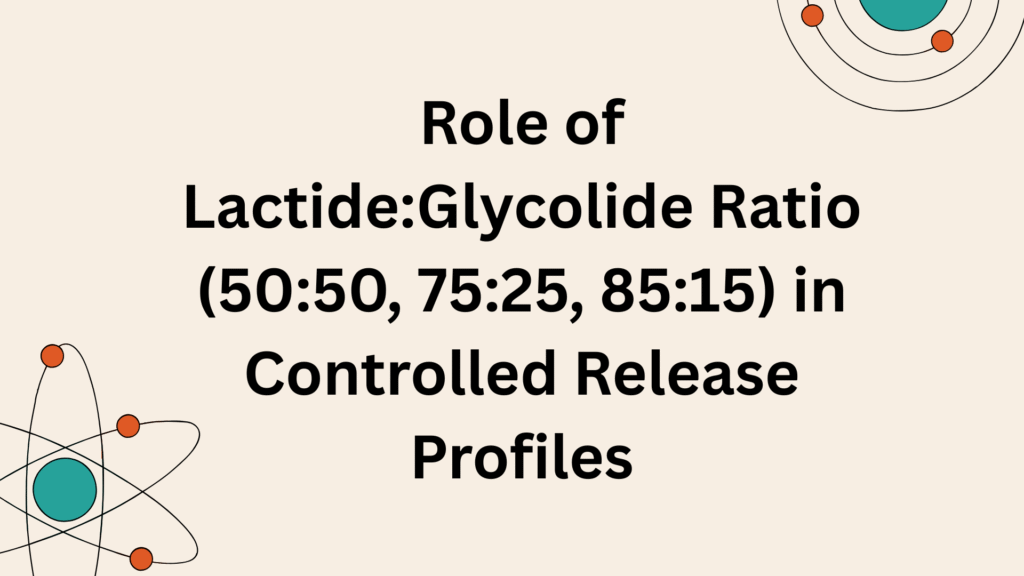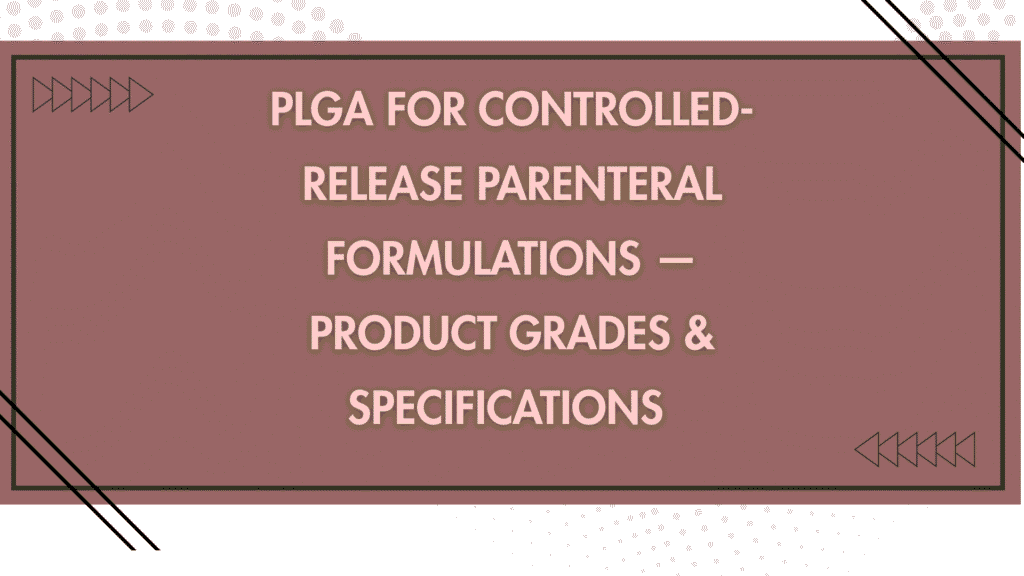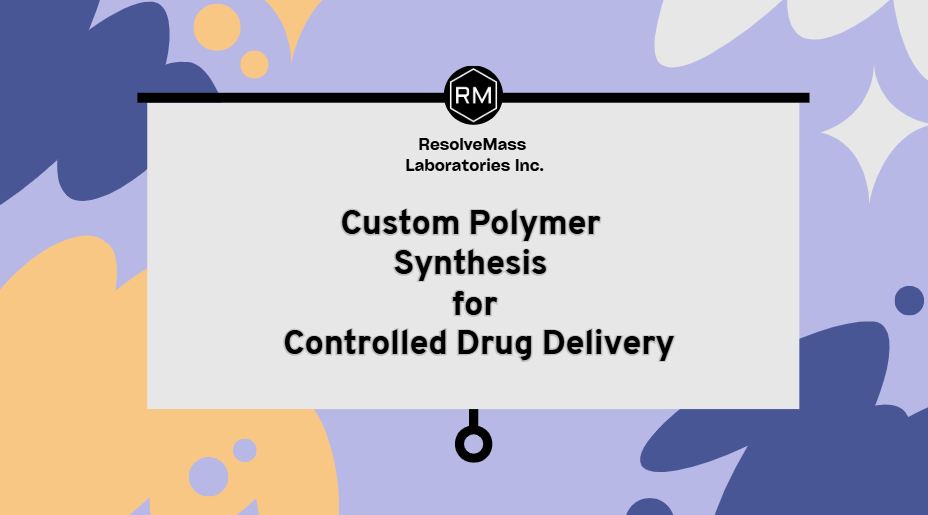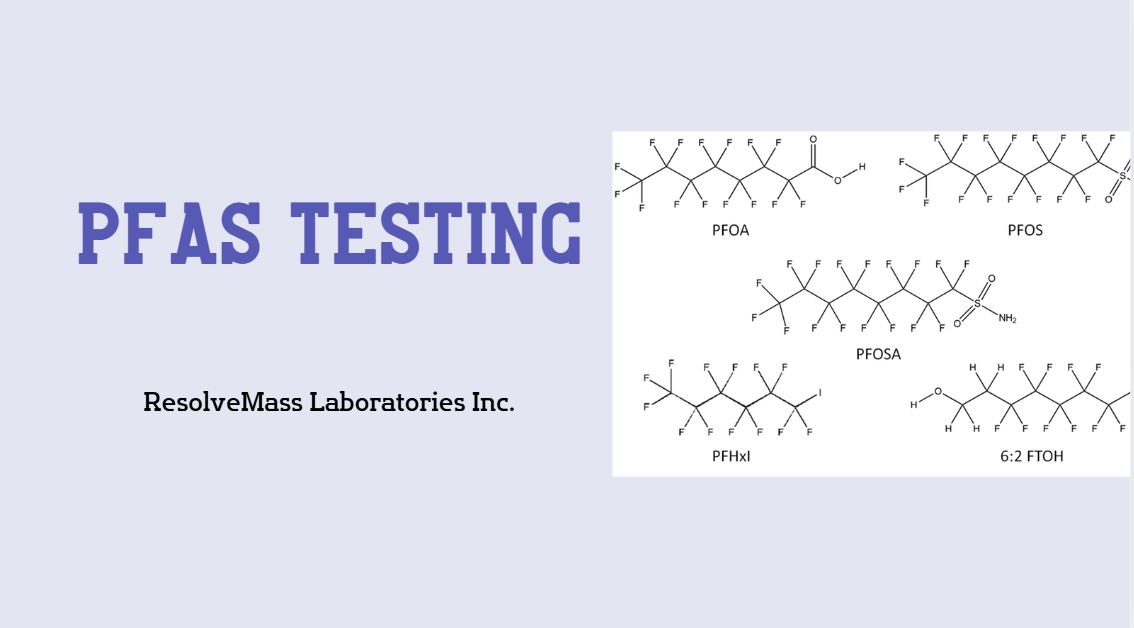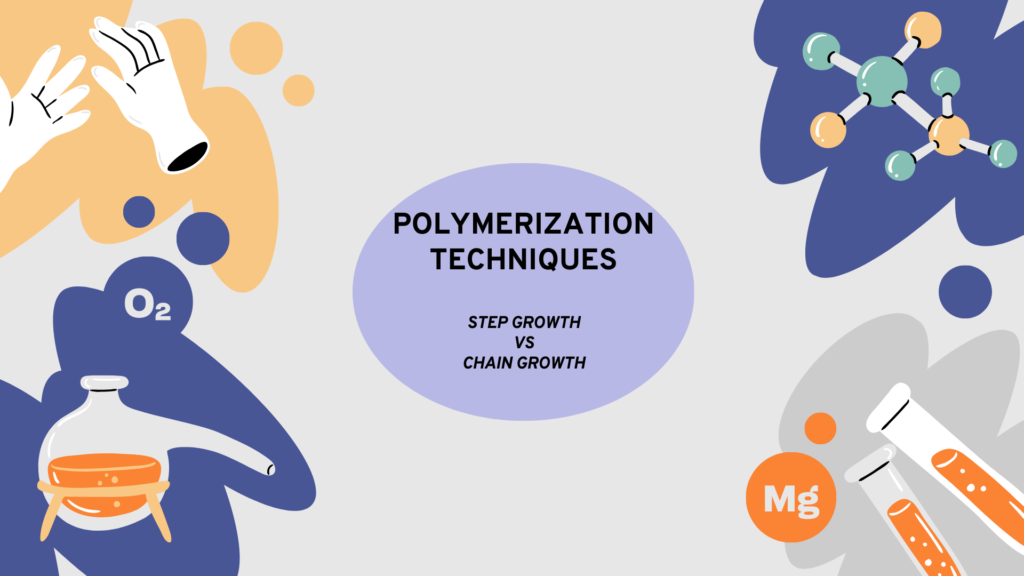
Polymers, the cornerstone of modern material science, have transformed industries from healthcare to aerospace. The synthesis of these macromolecules is rooted in well-defined polymerization techniques. Among these, step-growth polymerization and chain-growth polymerization stand out as fundamental processes. Understanding their mechanisms, differences, and applications is critical for researchers, manufacturers, and industries relying on advanced materials.
Learn Through Video: A Comprehensive Guide to Polymerization
The Basics of Polymerization
Polymerization refers to the chemical process where small molecules, known as monomers, combine to form larger macromolecules or polymers. The choice of polymerization technique significantly impacts the molecular structure, properties, and functionality of the resulting polymer.
Before diving into techniques, to get a clear overview of what polymer synthesis involves, click here – What Is Custom Polymer Synthesis? An In-Depth Guide
Historical Perspective
The journey of polymerization began with the accidental discovery of natural polymers like rubber and cellulose. The advent of synthetic polymerization in the early 20th century paved the way for modern materials. Pioneers such as Hermann Staudinger and Wallace Carothers laid the foundation for understanding polymer structures and the development of step-growth and chain-growth polymerization methods.
Curious how it all began? A Brief History of Polymer Synthesis: Key Milestones walks you through the key milestones in polymer synthesis history.
Step-Growth Polymerization
Step-growth polymerization involves the gradual reaction of functional groups between monomers. Unlike chain-growth polymerization, where monomer addition occurs at the chain end, step-growth polymerization relies on random combination reactions between monomers, dimers, trimers, and longer chains.
Mechanism
The step-growth mechanism can be summarized as follows:
- Initiation: Reaction begins with two reactive monomers, such as diols and diacids in polyester synthesis.
- Propagation: Any two oligomers or monomers can react, leading to molecular weight growth in a stepwise fashion. The reaction is not dependent on active centers.
- Termination: The process continues until the reactive groups are consumed or the reaction conditions are altered.
Characteristics
- Growth pattern: Polymer chains grow incrementally by the random coupling of oligomers and monomers.
- Molecular weight: Achieved molecular weight builds up slowly and requires high monomer conversion.
- Reactivity: Requires precise stoichiometry of functional groups for high molecular weight polymers.
- Examples: Polyesters, polyamides, and polyurethanes are classic products of step-growth polymerization.
Applications
Step-growth polymers are extensively used in:
- Fibers: For instance, Nylon-6,6 in textiles.
- Adhesives: Polyurethanes are used in construction and automotive industries.
- Engineering plastics: Polycarbonate and epoxy resins are crucial in aerospace and electronics.
Chain-Growth Polymerization
Chain-growth polymerization involves the addition of monomers to an active center in a sequential manner. This process is driven by initiation, propagation, and termination stages, making it distinct from step-growth polymerization.
Mechanism
- Initiation: Free radicals, cations, or anions are generated to start the reaction, often using initiators such as benzoyl peroxide or AIBN.
- Propagation: Active centers add monomers rapidly, leading to high molecular weight polymers early in the reaction. The process is highly dependent on active centers.
- Termination: Active sites are deactivated, halting chain growth. This can occur via combination or disproportionation mechanisms.
Explore how machine learning is optimizing polymerization methods like chain growth for better results – How AI Is Revolutionizing Custom Polymer Synthesis
Characteristics
- Growth pattern: Monomers are added one at a time at the active site of the growing chain.
- Molecular weight: High molecular weight polymers form early in the reaction.
- Control: Polymer properties can be influenced by the choice of initiators and reaction conditions.
- Examples: Polyethylene, polystyrene, and polyvinyl chloride.
Applications
Chain-growth polymerization produces polymers for:
- Packaging: Polyethylene films and polypropylene containers.
- Construction: PVC pipes and fittings.
- Consumer products: Polystyrene in disposable cutlery and packaging.
- Automotive: Acrylonitrile-butadiene-styrene (ABS) for dashboards and trim.
Uncover how artificial intelligence is redefining polymer design, precision, and performance across industries.
Explore Innovation →
See how custom polymer synthesis powers everyday technologies and advanced science alike – The Importance of Polymer Synthesis in Modern Science and Technology
Key Differences: Step-Growth vs Chain-Growth Polymerization
| Feature | Step-Growth Polymerization | Chain-Growth Polymerization |
| Mechanism | Random reaction of oligomers and monomers | Sequential addition to active centers |
| Molecular weight growth | Gradual | Rapid at the start |
| Monomer consumption | Monomers react quickly, even at low molecular weights | Monomers remain until termination |
| Typical products | Polyesters, polyamides | Polyethylene, polystyrene |
| Applications | High-performance materials | Mass-market plastics |
Detailed Analysis of Step-Growth Polymerization
Step-growth polymerization is particularly versatile, allowing the synthesis of a wide variety of polymers with intricate architectures.
Functional Group Compatibility
The functionality of monomers determines the polymer structure:
- Bifunctional monomers: Lead to linear polymers (e.g., polyesters).
- Multifunctional monomers: Enable network or crosslinked polymers (e.g., epoxy resins).
Kinetics
The reaction kinetics are governed by the Carothers equation, which relates the degree of polymerization to the extent of reaction. High molecular weights require nearly complete monomer conversion.
Limitations
- Precise stoichiometric control is necessary.
- Side reactions, such as cyclization, can reduce molecular weight.
Detailed Analysis of Chain-Growth Polymerization
Chain-growth polymerization excels in producing polymers with uniform molecular weights and predictable properties.
Types of Chain-Growth Polymerization
- Free Radical Polymerization:
- Widely used for polyethylene and polystyrene.
- Susceptible to chain-transfer reactions and termination.
- Ionic Polymerization:
- Includes cationic (e.g., polyisobutylene) and anionic (e.g., polystyrene) mechanisms.
- Allows for controlled polymerization with low polydispersity.
- Coordination Polymerization:
- Utilizes catalysts like Ziegler-Natta for polypropylene and polyethylene.
- Enables stereospecific control.
Explore how synthesis techniques like chain growth affect the final properties of thermoplastics and thermosets – Thermoplastic vs. Thermosetting Polymers: Insights for Custom Polymer Synthesis
Controlled/Living Polymerization
Advanced techniques such as Atom Transfer Radical Polymerization (ATRP) and Reversible Addition-Fragmentation Chain Transfer (RAFT) polymerization offer precise control over molecular weight and architecture [1, 2]. These methods reduce polydispersity and enable the synthesis of block copolymers and star polymers.
Advanced Techniques in Polymerization
Recent innovations have further refined these processes, enabling tailored polymer synthesis:
Click Chemistry in Step-Growth
Click chemistry has revolutionized step-growth polymerization by facilitating efficient and selective reactions under mild conditions [3]. For example, azide-alkyne cycloadditions have enabled the rapid synthesis of dendritic polymers.
Hybrid Techniques
Combining elements of step-growth and chain-growth polymerizations allows for novel polymer structures, expanding the application spectrum [4]. Such hybrids include hyperbranched polymers and graft copolymers, which blend properties from both mechanisms.
Role of Catalysis
Catalysts such as organometallic complexes and enzymes are increasingly used to improve reaction efficiency and selectivity in both polymerization methods.
Curious about living polymerization? RAFT vs. ATRP: Choosing the Best Method for Custom Polymer Synthesis, this guide walks you through two leading methods used in custom synthesis.
Sustainability in Polymerization
The growing emphasis on sustainability has spurred advancements in green polymerization techniques:
- Bio-based monomers: Derived from renewable resources, such as polylactic acid (PLA) from corn starch.
- Recyclable polymers: Designed for easy depolymerization and reuse.
- Solvent-free processes: Minimize environmental impact by eliminating harmful solvents.
Explore a biodegradable polymer that’s making polymerization more sustainable and efficient.
Learn More →
Click here – Introduction to Poly(β-amino esters): Structure and Properties to explore a biodegradable polymer that’s making polymerization more sustainable and efficient.
Future Trends
With growing demand for sustainable materials, polymerization techniques are evolving. Green chemistry principles are now integrated into these processes, reducing environmental impact and enhancing recyclability [5]. Emerging trends include:
- Self-healing polymers: For applications in aerospace and electronics.
- Conductive polymers: Enabling advancements in wearable technology and energy storage.
- 3D Printing Materials: Tailored polymers for additive manufacturing.
Want to see what’s next in polymer science? Emerging Trends in Custom Polymer Synthesis for 2025 and Beyond, this article explores the trends shaping the future of custom synthesis.
Conclusion
Understanding step-growth and chain-growth polymerization is fundamental for anyone involved in polymer science or material engineering. These techniques provide the foundation for creating a diverse range of polymers with tailored properties. As advancements continue, the possibilities for innovative materials remain boundless.
Explore how global industries are responding to polymer breakthroughs and where growth is headed next – Global Market Insights: The Future of Custom Polymer Synthesis
Explore how global industries are responding to polymer breakthroughs – and where growth is headed next.
Read the Global Insights →
References
- Matyjaszewski, K., et al. “Atom Transfer Radical Polymerization (ATRP).” Chemical Reviews, 2001, DOI: 10.1021/cr000236l.
- Barner-Kowollik, C., et al. “RAFT Polymerization—A Journey from Mechanisms to Applications.” Macromolecular Rapid Communications, 2019, DOI: 10.1002/marc.201800739.
- Kolb, H.C., et al. “Click Chemistry: Diverse Chemical Function from a Few Good Reactions.” Angewandte Chemie International Edition, 2001, DOI: 10.1002/1521-3773(20010216)40:3<200::AID-ANIE200>3.0.CO;2-5.
- Cooper, A.I. “Polymer Synthesis and Processing Using Supercritical Fluids.” Polymer Reviews, 2000, DOI: 10.1080/714975780.
- Sheldon, R.A., et al. “Green Chemistry and Sustainable Technology in Polymer Science.” Green Chemistry, 2016, DOI: 10.1039/C5GC02524A.
How to Determine PLGA Polymer Molecular Weight and PDI by GPC as per USP General Chapter <316>
Summary Understand what PLGA polymer molecular weight and PDI are, and why they matter for…
How to Determine Molecular Weight of PLGA Polymers by NMR as per USP General chapter <315>
🧭 Introduction: How to Determine Molecular Weight of PLGA Polymers by NMR as per USP…
How to Calculate PLGA Block Length of PLGA: New USP Chapter <319> Sets the Standard
Introduction: How to Calculate Block Length of PLGA, a Critical Analytical Requirement For many years,…
Role of Lactide:Glycolide Ratio (50:50, 75:25, 85:15) in Controlled Release Profiles
INTRODUCTION The Lactide:Glycolide ratio is one of the strongest determinants of how a PLGA-based drug…
PCL and PLA Excipients for Parenteral & Implantable Drug Delivery — Supplier Overview
Introduction: Meeting the Demand for High-Purity PCL and PLA Excipients As the pharmaceutical industry advances…
PLGA for Controlled-Release Parenteral Formulations — Product Grades & Specifications
Summary PLGA for controlled release enables precise, sustained drug delivery in parenteral formulations through adjustable…



